- Best Soaker Hose Options Your Yard Truly Needs This Year - January 5, 2024
- Best Tomato Planters You Should Really Consider for Your Garden - December 21, 2023
- Best Home Depot Tomato Cages to Support Your Plants - December 16, 2023
The sunflower is a humble but noble plant. Not many plants can evoke feelings of both unpretentiousness and elegant sophistication at the same time. Viewers are free to feel either or both emotions when gazing upon this natural beauty. This is especially true when one gets the opportunity to see a pink sunflower variety.
At least, that is how I feel about pink sunflowers. Sure, I love the original yellow varieties, but sometimes it’s nice to see a unique spin on an everyday object. If you’re anything like me, once you heard that there are pink sunflower varieties, you were probably curious to know more. And that is exactly why I’ve sat down to write this article.
My goal for this article is to provide you with information about how to purchase, plant, and grow healthy pink sunflowers. We’ll touch on some other related topics along the way. Still, the main focus will always be these lovely sunflower varieties.
Bottom Line Upfront
I highly recommend that you read the entirety of this article, but I understand if you don’t have the time. If that is where you are today, then here are a few key takeaways that sum up how to care for pink sunflower varieties:
- They require at least eight hours of full sun every day
- They require well-draining soil
- They do not require much fertilizer
- They only need to be staked if they are weak or heavy
- They should only be planted after the final frost of spring
Popular Types & Varieties
Before we can fully discuss how to care for pink sunflowers, I think it is best to present all the varieties in their full glory. With this list, you can compare and contrast the varieties against one another so you can decide which are best to meet your gardening needs.
Evening Sun
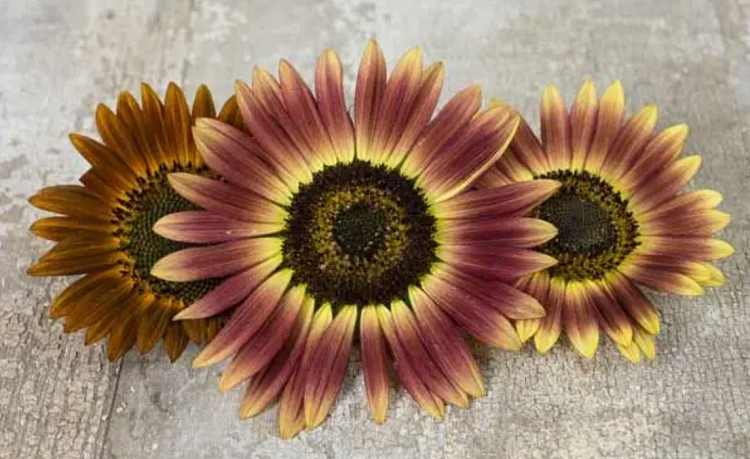
While this sunflower variety does not contain showy pink petals, I think it does offer enough of a pinkish hue to include in this list.
The primary colors included within this variety are rusty red and burnt orange, but look closely, and you will notice a tinge of pink. This is an awesome flower to include in your garden because you get such a range of colors, and that is precisely why I like this variety.
Strawberry Blonde
In my opinion, this sunflower variety offers everything you could want. Its petals grow in a whimsical shape and are colored in a soft pink tone. Not only is it extremely easy to grow, but it is actually beneficial to garden spaces. Strawberry Blonde is one of my favorite sunflowers because it beautifies gardens and attracts pollinators.
Iris Tectorum Rose
Since this variety doesn’t contain pollen, I like to use it in cut flower arrangements. Plus, its soft pink petals look so pretty on my kitchen table.
Cherry Rose
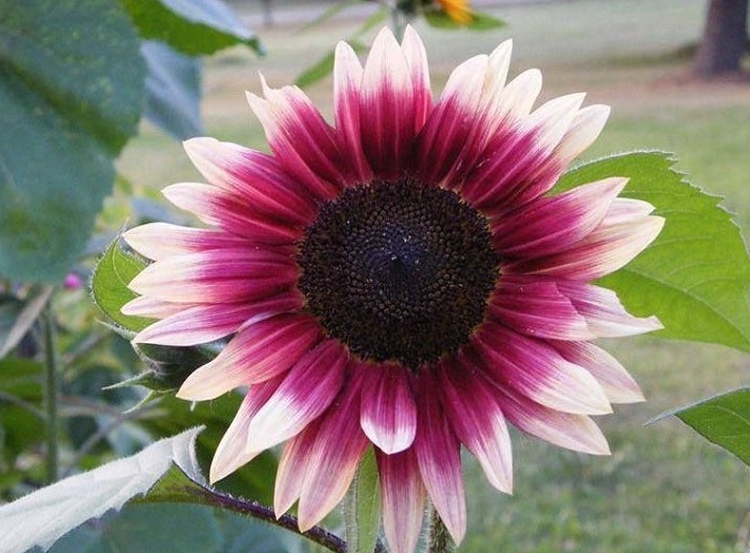
If I had to choose, I’d say this pink sunflower variety is my favorite. It is stunningly beautiful, and it is also undemanding about its care. I love how the petals turn from dark mauve in the center to a soft pink along the outside edges.
Ms. Mars
This sunflower variety is a close second on my list of favorites. Just like the Cherry Rose variety, it also has petals that transition from dark pink to light pink, and caring for it is simple. Those blended colors just make me swoon.
Pink Pooh
This sunflower variety is new to the garden scene but is definitely getting noticed. If you like fluffy flowers formed from tiny petals, then you need to get your hands on some of these.
While I think they are very lovely and unique, especially for a sunflower, I don’t favor them. They will look great in a fresh flower arrangement, but I want to grow sunflowers that produce edible seeds at the end of the year. That’s just me, though.
Ruby Eclipse
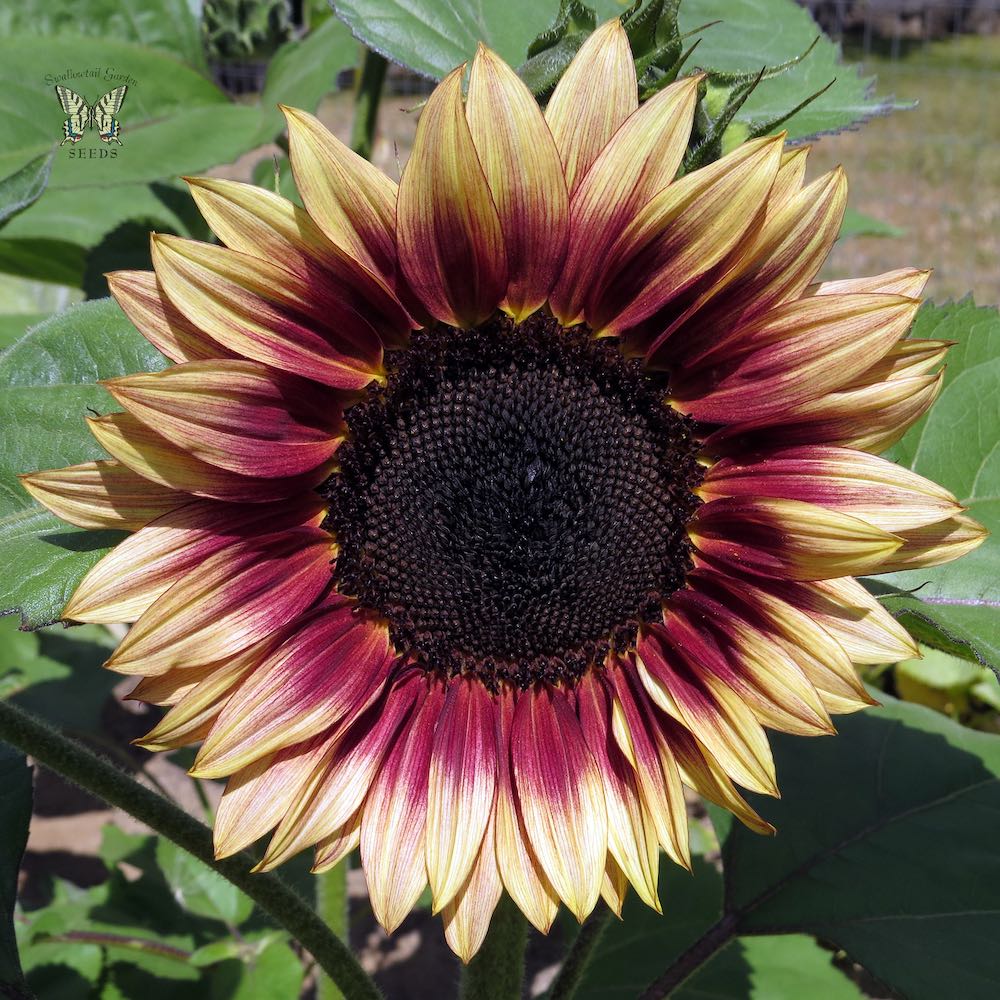
This sunflower ranges in color from creamy yellow to burnt orange to rust-red to pink mauve. As you might have guessed, it is a favorite variety of mine. It is a larger variety that can grow up to 5½ feet tall with a head that is 6 to 8 inches in diameter. I love the flowy and whimsical petals of this sunflower variety because they are perfect for use in cut flower bouquets.
How to Identify Pink Sunflowers
Most pink sunflower varieties tend to look like a typical sunflower but with pink petals. They feature a dark brown center filled with seeds. The seed center is surrounded by large flowing petals. The one variety with features that stands apart is the Pink Pooh variety.
How to Grow Pink Sunflowers from Seed
Just like all other sunflower varieties, pink sunflowers are easy to grow from seed. I even use these varieties as fun elementary school projects. The steps are simple, but the one thing to remember is timing – you should only plant sunflowers outside once the chance of frost has passed. Here is how I like to plant my sunflower seeds:
- Select and prepare a garden bed with access to plenty of sunlight
- Ensure that the soil in the prepared garden bed drains well
- Plant the seeds in the soil, ensuring they are spaced six inches apart and one inch deep
- Trim early sprouts so that the plants are spaced twelve inches apart
- Expect blooms to appear between 80 to 120 days after planting
When to Plant Pink Sunflowers
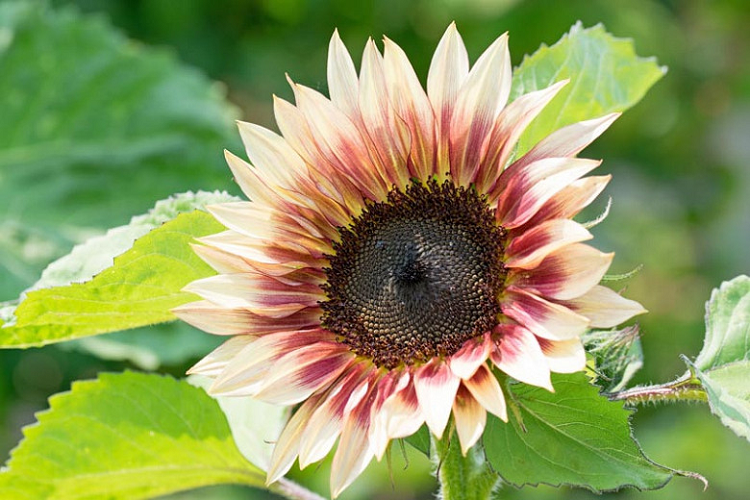
Sunflowers can be planted indoors at any time, but they should only be planted outdoors once the threat of frost has passed. My toddler and I have a lot of fun planting seeds inside and then transplanting them outside when the weather allows. Try it this year with your kids.
Best Pink Sunflower Fertilizer
Sunflowers will grow well without fertilizer, but if you want to ensure that your sunflowers bloom large and vibrantly, you may want to feed them a month after planting. When I fertilize my sunflowers, I prefer using Eden 100% Neem Fertilizer because it is entirely organic and a slow-release formula.
Pink Sunflower Soil Requirements
Soil is very important to sunflower growth. Ensure that your sunflowers are placed in soil that will drain off excess water and that the soil’s pH level is slightly acidic. If you don’t ensure that the soil drains well, your plant might get root rot, which is never fun.
Pink Sunflower Light Requirements
I may love growing sunflowers most because it gives me an excuse to wear my hat. You should probably wear a hat too when you garden because it is a warm activity. Fortunately, sunflowers like it hot and sunny. They grow their best when placed in direct sunlight for eight hours a day.
Pink Sunflower Water Requirements
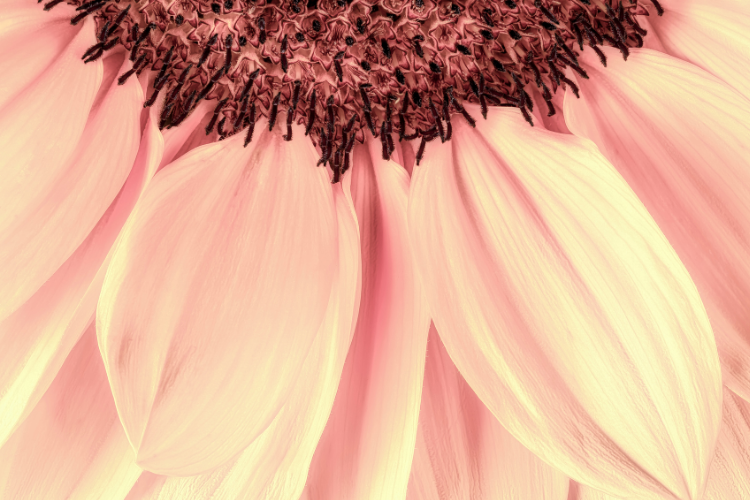
While sunflowers love the sun, they don’t love water so much. Initially, the little seedlings and sprouts will need moist (not soggy) soil, but they don’t require much water once the plants are established. A rule of thumb is to water the soil if it is dry and cracked or the plants are beginning to wilt; otherwise, I don’t stress about sunflower hydration because they are naturally drought tolerant.
Best Pink Sunflower Companion Plantings
Sunflowers have been grown alongside the three sisters, squash, corn, and beans, as a fourth sister for centuries. So, if you are trying to keep its ancient traditions alive in your garden, choose these plants as companions. But, if you would like to venture into new gardening methods, you may be interested in providing your sunflowers with one or more of the following companion plants:
Rosemary
This is one of my favorite herbs to grow alongside sunflowers. It grows large enough to support other types of plants, and it attracts pollinators to my flowers.
Oregano
I think oregano is awesome because it attracts beneficial insects that will repel harmful insects. That is why I try to grow some in my garden.
Marigolds
These are one of the few flowers that I can actually smell (I know it’s odd). That is not the only reason I like having them around, though. These flowers attract ladybugs, which are the natural enemy of aphids and black flies. With these beneficial insects on your side, you could have a great harvest of sunflower seeds.
Lavender
No garden looks complete without a little lavender (my opinion). Not only is this a beautiful flower to place this flower alongside your sunflowers, but it also attracts pollinators.
Lettuce
Growing lettuce near your sunflowers is more for the benefit of the lettuce than the sunflower. But, you’ll benefit too when your crisp and crunchy greens are shaded so effortlessly by your sunflower garden.
Geraniums
While geraniums are not my favorite option as a companion for my sunflowers, they are great at what they provide. Place this flower alongside your sunflowers, and they will attract beneficial insects that will repel harmful insects.
Pink Sunflower Treatments and Maintenance

While sunflowers are rather easy to grow, they are not without their problems. Pests and diseases will likely attack your sunflowers, so you should be prepared to deal with both. I’ve found that the best way to keep my sunflowers safe and healthy is by knowing what problems they face before they come along.
I want to share what I have learned about the pests and diseases faced by sunflowers, so you are well prepared to step into your garden. Here is some of the most common issues faced by sunflowers and how to treat them:
Alternaria
Look for this fungal disease during hot and humid weather. The symptoms will show up as dark brown or black lesions and broken stems. Confront this issue by applying a fungicide to the infected plants.
Aphids
Look for evidence of these pests on the underside of leaves. The main symptom of an aphid infestation will show up as a sticky residue that attracts ants. Confront this issue by introducing natural predators (lady beetles) into your garden, washing off the leaves with a hose, and/or using insecticidal soap on the leaves.
Banded Sunflower Moth
Look for evidence of these pests on the seed head of the plants. This type of infestation symptoms are empty seeds and webbing on the plant. Confront this issue by applying an insecticide to the infected plants.
Cutworms
Look for evidence of these pests when the plant is just a seedling. The symptom of this type of infestation is seedlings that are prevented from growing further than the soil level. Confront this issue by placing a paper cup around each seedling and pulling weeds in the garden bed.
Downy Mildew
Look for evidence of this infestation on leaves. The symptoms you should look for are gray fuzz and yellow spots. Confront this issue by providing each sunflower plant with air circulation and sunlight.
Powdery Mildew
Look for evidence of this infestation when humid weather occurs. This type of infestation symptoms are white to white-gray discoloration on leaves and curling leaves. Confront this issue by providing each sunflower plant with air circulation. Pruning the plants can also help.
Rust
Look for evidence of this disease on stalks and foliage. The symptom of this disease is rust-colored spots. Confront this issue by removing infected plants, planting resistant varieties, and rotating crops.
Septoria Leaf Spot
Look for evidence of this disease after rainy days. The symptoms of this disease are green and greasy spots on lower leaves and significant loss of foliage. Confront this issue by removing infected plants, removing nearby weeds, and rotating crops.
Sunflower Beetle
Look for evidence of this type of infestation on the seed head. The symptoms will appear as enlarged seeds and empty kernels. Confront this issue by applying an insecticide to the infected plants.
Sunflower Moth
Look for evidence of this type of infestation on the seed head. The symptoms you should look for are empty kernels and webbing. Confront this issue by applying an insecticide to the infected plants.
Sunflower Stem Weevil
Look for evidence of this type of infestation on the leaves and stalks. The symptoms are damaged leaves and weakened stalks. Confront this issue by applying an insecticide to the infected plants.
Where to Purchase Pink Sunflowers
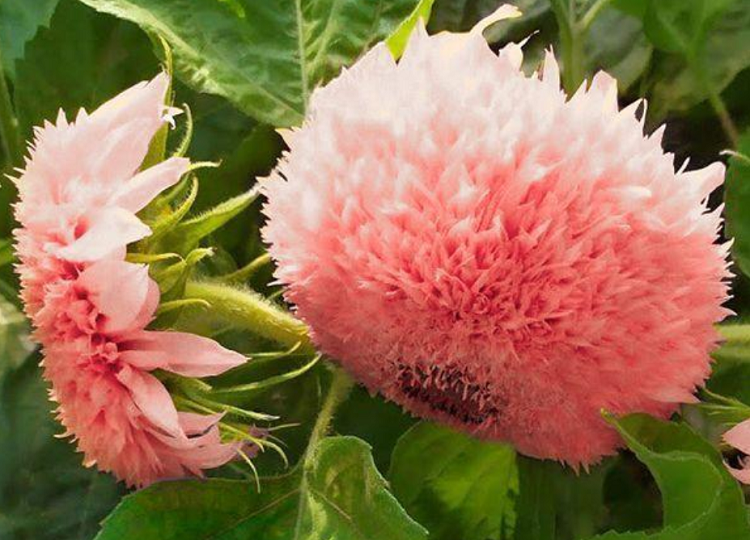
It may be possible to find pink sunflowers at your local lawn and garden store, but you must check with them to confirm this. If you are not interested in making a call or a trip to your lawn and garden shop to find pink sunflower seeds or plants, I suggest you order from one of these online shops:
In Conclusion
I hope you have enjoyed learning more about these beautiful and easy-going plants with me. My favorite part of growing sunflowers is being able to share the experience with others. To gather together with like-minded gardeners and plant hobbyists to chat about nature and all the wonderful things it brings into our lives is so important to me.
Now that I’ve shared a little bit about why I enjoy gardening sunflowers, particularly the pink varieties, my hope is that you have been inspired to do the same. It’s time to dig in the dirt a little, watch sprouts grow and bloom, and especially share the beauty with loved ones. Here’s to many sunny days in the garden!

